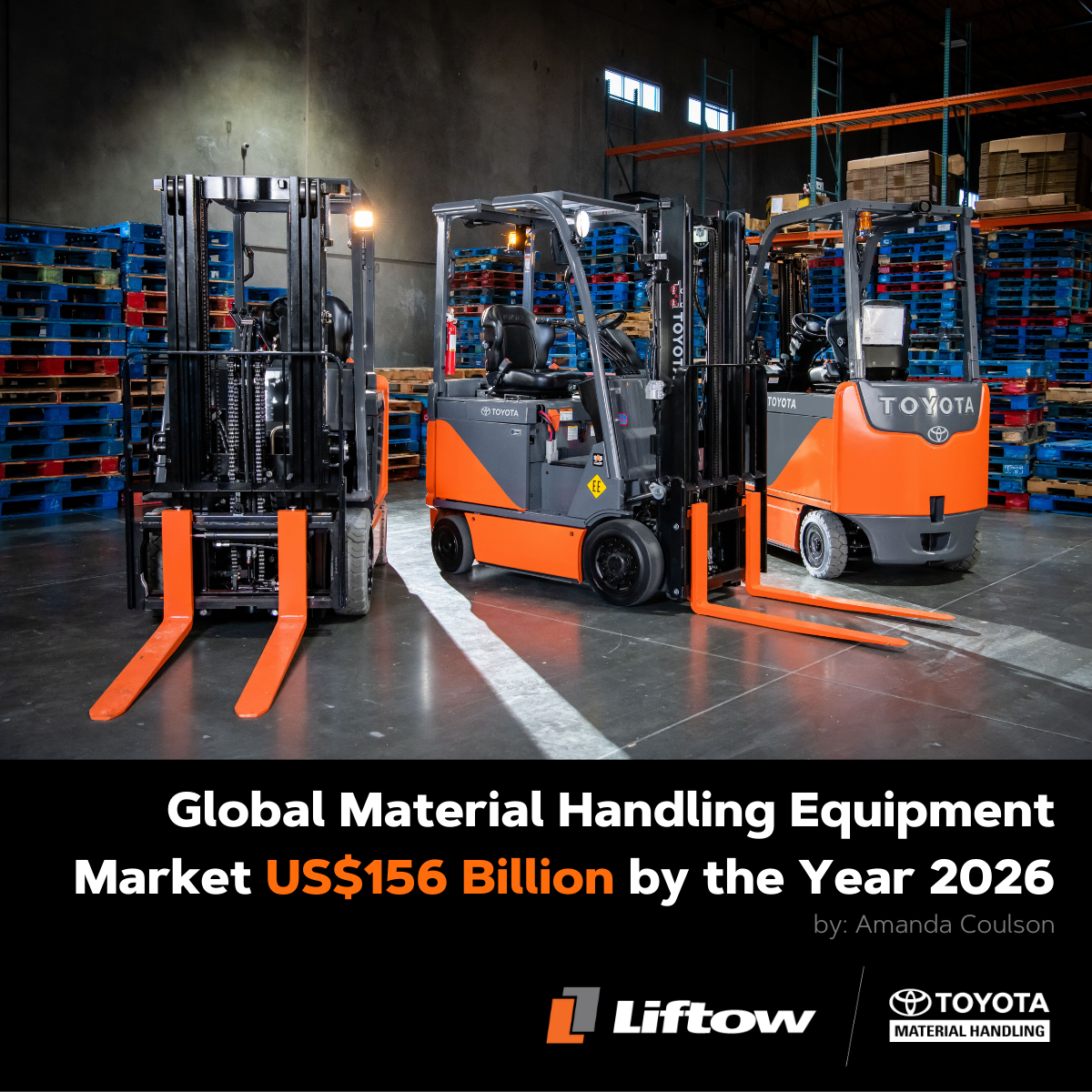
Global Material Handling Equipment Market to Reach US$156 Billion by the Year 2026
Material Handling Equipment (MHE) represents an integral part of the supply chain of diverse industries. The rising need for global production companies to automate operations, and foster flow of goods in an efficient manner is the key force driving the market, at present. Growth in the market is also driven by improving investment in the construction and industrial sector, growing consumer spending on non-durable as well as durable products, improvement in fixed investment spending, and rise in mining activities worldwide. Growth in the MHE industry is further underpinned by the replacement of antiquated machinery with new automated systems and robotics amid the increasing production shift towards artificial intelligence and Industry 4.0. A notable trend in the industry is increasing switch to cleaner battery-powered electric materials handling systems. Demand for automated guided vehicles, and automated conveyors are expected to particularly register strong gains through the forthcoming years. Mature industrialized countries in Europe and the US contribute to the bulk of revenues, fueled by healthy replacement demand and the move towards automation and modernization of production processes in key end-use sectors.
Amid the COVID-19 crisis, the global market for Material Handling Equipment estimated at US$118.7 Billion in the year 2020, is projected to reach a revised size of US$156 Billion by 2026, growing at a CAGR of 4.7% over the analysis period. Conveyor Systems, one of the segments analyzed in the report, is projected to grow at a 4.3% CAGR to reach US$68.1 Billion by the end of the analysis period. After a thorough analysis of the business implications of the pandemic and its induced economic crisis, growth in the Forklifts segment is readjusted to a revised 5% CAGR for the next 7-year period. This segment currently accounts for a 32% share of the global Material Handling Equipment market. Conveyors represent the most common MHE available as well as an imperative component of the material transition process in manufacturing facilities globally. The forklifts segment is anticipated to benefit from technological advances and availability of automated platforms like monitoring and tracking solutions. The broader adoption of forklifts and industrial trucks is attributed to their ability to efficiently lift and move materials over different paths without any restrictions.
The U.S. Market is Estimated at $32.2 Billion in 2021, While China is Forecast to Reach $27.3 Billion by 2026
The Material Handling Equipment market in the U.S. is estimated at US$32.2 Billion in the year 2021. The country currently accounts for a 26.39% share in the global market. China, the world`s second largest economy, is forecast to reach an estimated market size of US$27.3 Billion in the year 2026 trailing a CAGR of 6.4% through the analysis period. Among the other noteworthy geographic markets are Japan and Canada, each forecast to grow at 3.2% and 3.7% respectively over the analysis period. Within Europe, Germany is forecast to grow at approximately 4.3% CAGR while Rest of European market (as defined in the study) will reach US$29.2 Billion by the end of the analysis period. North America represents a key market and growth is anticipated to gain from rising awareness regarding worker safety, the need to efficiently manage bulk materials and emergence of Industry 4.0 with increasing penetration of IoT. In addition, the requirement to minimize downtime along with strong focus on making the supply chain more efficient is expected to further drive the adoption of MHE like electric lift trucks. Growth in Europe market is attributed to increasing use of automation solutions and significant investments by governments to foster adoption of advanced platforms. The region is also witnessing increasing launch of sophisticated solutions to ensure seamless and efficient operations. Factors such as promising outlook of the manufacturing sector, ongoing transition towards automation and increasing labor costs are anticipated to compel manufacturers in Asia-Pacific region to embrace material handling equipment to increase process throughput.
Hoists & Cranes Segment to Reach $21.7 Billion by 2026
Hoists and Cranes operate in a fixed location and a single work place. The equipment is used primarily to handle heavy loads and find application in areas of construction, shipbuilding and shipping industries. Electric drives are gaining traction in the material handling equipment sector, particularly in the crane and hoists segment. One of the major driving forces for this growing affinity for electric drives is the increased focus on operator safety and productivity, as well as realizing efficiencies in manufacturing and warehousing operations. In the global Hoists & Cranes segment, USA, Canada, Japan, China and Europe will drive the 3.9% CAGR estimated for this segment. These regional markets accounting for a combined market size of US$12.4 Billion in the year 2020 will reach a projected size of US$16.5 Billion by the close of the analysis period. China will remain among the fastest growing in this cluster of regional markets. Led by countries such as Australia, India, and South Korea, the market in Asia-Pacific is forecast to reach US$2.8 Billion by the year 2026, while Latin America will expand at a 4.5% CAGR through the analysis period.


